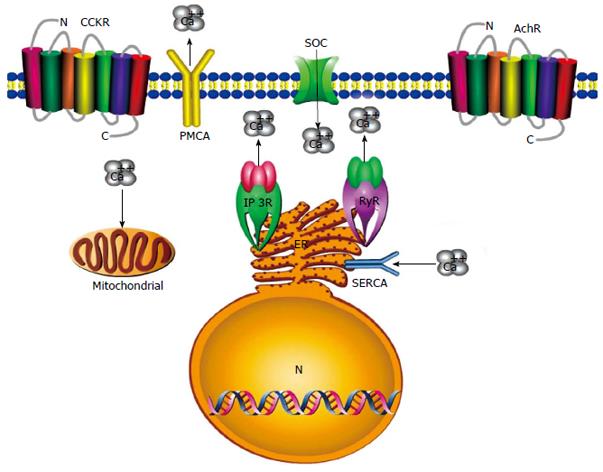Copyright
©2014 Baishideng Publishing Group Inc.
World J Gastroenterol. Nov 21, 2014; 20(43): 16146-16152
Published online Nov 21, 2014. doi: 10.3748/wjg.v20.i43.16146
Published online Nov 21, 2014. doi: 10.3748/wjg.v20.i43.16146
Figure 1 Diagram showing possible interventions for therapeutic targets of pancreatitis.
Blockage of Ca2+ entry will probably depend on inhibition of the store-operated Ca2+ (SOC) channel in the pancreatic acinar cell. Activation of plasma membrane Ca2+-adenosine triphosphate (ATP)ase (PMCA) and sarco/endoplasmic reticulum Ca2+-activated ATPase (SERCA) would enhance Ca2+ extrusion from the cell and endoplasmic reticulum (ER). Intracellular Ca2+ release from the ER can be prevented through inhibition of the inositol 1,4,5-trisphosphate receptor (IP3R) and ryanodine receptor (RyR). Preconditioning strategies could protect mitochondrial function to ensure adequate ATP production extrusion by Ca2+ pumps and for pancreatic acinar cells to survive intact.
- Citation: Li J, Zhou R, Zhang J, Li ZF. Calcium signaling of pancreatic acinar cells in the pathogenesis of pancreatitis. World J Gastroenterol 2014; 20(43): 16146-16152
- URL: https://www.wjgnet.com/1007-9327/full/v20/i43/16146.htm
- DOI: https://dx.doi.org/10.3748/wjg.v20.i43.16146









